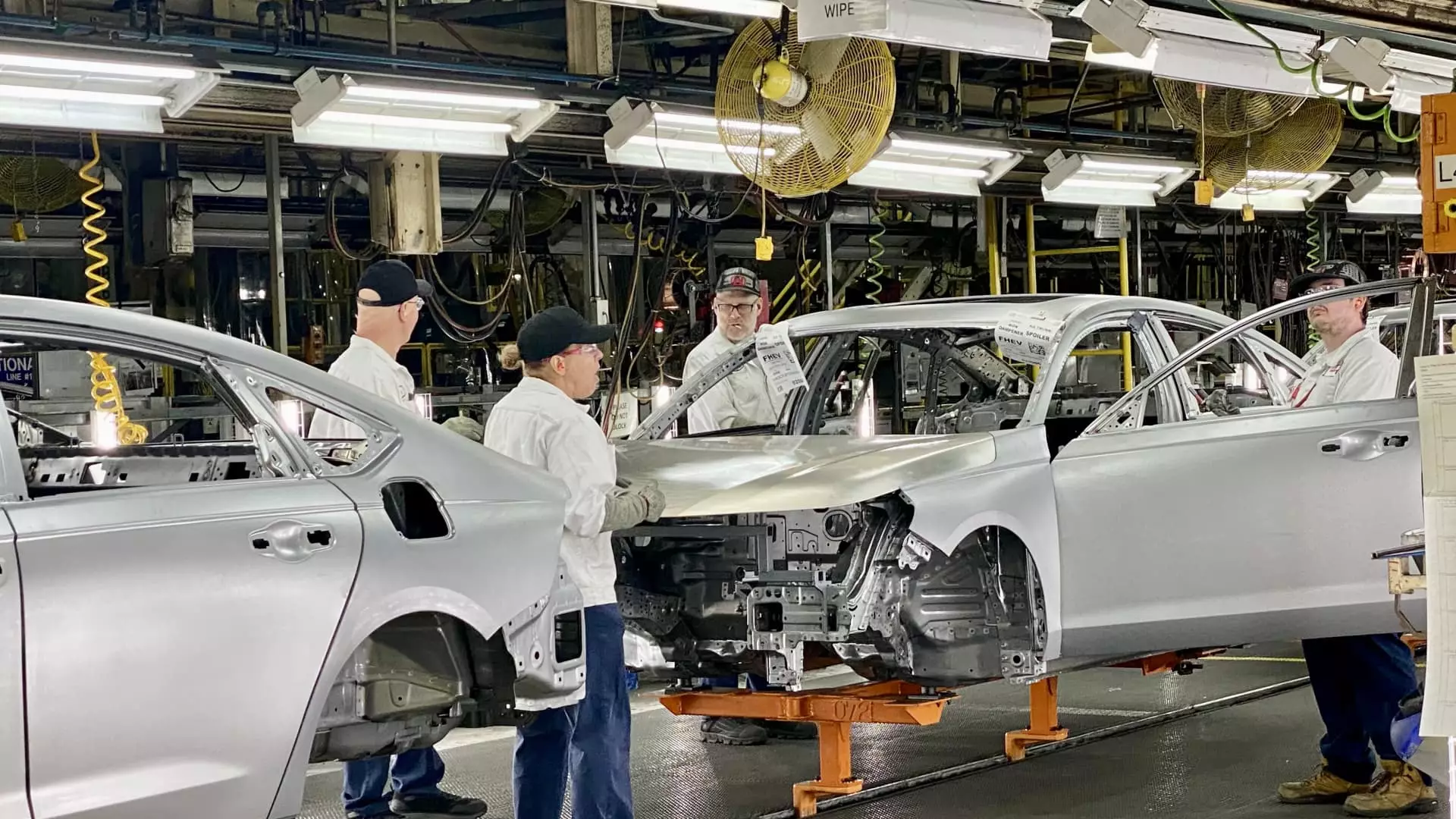Honda Motor, a stalwart in the automotive industry for over 75 years, is making a significant leap into the future of electric vehicle (EV) production. This pivotal evolution is taking place not in Japan, its home base, but in Ohio, a choice that reflects both strategic positioning and adaptive manufacturing practices. As part of a broader initiative, Honda is allocating over $1 billion in upgrades to its facilities in the Buckeye State, an investment that has increased from an initial $700 million announcement. This robust financial commitment will allow Honda to evolve its manufacturing processes to meet the ever-growing demand for electric vehicles while maintaining its traditional vehicle production lines.
Central to Honda’s manufacturing overhaul are six colossal “giga presses.” These state-of-the-art machines, made famous by electric vehicle pioneer Tesla, enable the production of large components through a technique called megacasting. By utilizing high-pressure die-cast technology, Honda aims to streamline its production, theoretically reducing costs and enhancing efficiency. Traditional manufacturing often involves welding numerous parts together, a labor-intensive and time-consuming process; however, megacasting allows for these components to be produced as a single unit. Such innovations not only optimize the manufacturing timeline but also mark a shift in Honda’s approach to vehicle assembly.
The introduction of “cell” manufacturing for battery cases signifies Honda’s readiness to embrace innovative production methods tailored for the unique requirements of electric vehicles. The flexibility inherent in this new process allows for better adaptation to production fluctuations, mitigating the risks associated with conventional assembly lines. As Honda’s Marysville plant transitions to accommodate both electric and traditional vehicles on the same line, it stands as a testament to the company’s commitment to maximized efficiency in a rapidly evolving market.
Honda’s decision to centralize a significant portion of its EV production in Ohio is telling of the state’s strategic importance in the automotive supply chain. The Marysville plant, located near Columbus, will not only scale up to produce approximately 220,000 vehicles a year but will also operate as a flagship for Honda’s global EV production strategies. This facility will house nearly 60 flexible manufacturing “cells” for battery assembly, allowing for localized production and minimizing transportation delays that often plague traditional manufacturing.
Coupled with a $3.5 billion investment in a new battery plant, Honda is positioning Ohio as a central hub in its quest to alleviate reliance on overseas manufacturing, a critical goal in the current geopolitical climate. The investments also seek to navigate complexities such as potential tariffs, ensuring the company’s sustainability and competitive edge in the U.S. market.
Honda has set ambitious targets for itself, aiming for zero environmental impact by 2050, with a particular focus on carbon neutrality and resource circulation. In this vein, the investments in Ohio also prioritize eco-friendly manufacturing practices. The incorporation of specially designed aluminum for battery packs, which can be recycled, exemplifies Honda’s commitment to reducing waste while enhancing product sustainability.
The upcoming all-electric Acura RSX crossover, the first EV directly produced by Honda in the U.S., signifies a critical step toward fulfilling these environmental commitments. Honda’s rivalry in the electric vehicle space has seen it lag behind other automakers; however, the company’s resolve to eliminate emissions while fostering innovation represents a promising paradigm shift.
The changes enacted at Honda’s Ohio facilities indicate more than just an adaptation to the EV market—they represent a fundamental rethinking of manufacturing itself. Bob Schwyn, a senior vice president at Honda Development and Manufacturing of America, describes this initiative as a “second founding” for the company. This fresh perspective gravitates toward maximizing efficiency while concurrently establishing eco-friendly operations capable of adapting to an increasingly volatile automotive landscape.
Honda’s significant investments and innovations in Ohio embody a crucial strategy for staying relevant in the rapidly evolving automotive industry. Through advanced manufacturing techniques, strategic localization of production, and an unwavering commitment to environmental stewardship, Honda is laying the groundwork for a promising future in electric mobility while safeguarding its legacy as a leader in the automotive field. With its ambitious goals and substantial investments, Honda is not merely keeping pace with the electric vehicle revolution—it is actively shaping its trajectory.


Leave a Reply